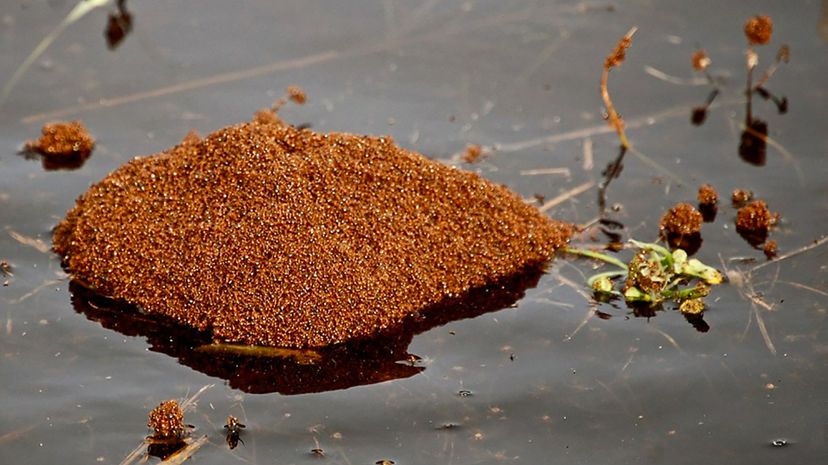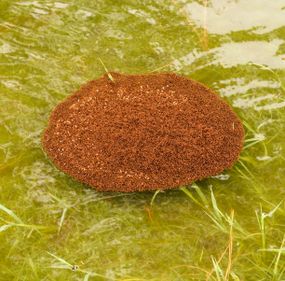
The horrors Hurricane Harvey has wrought upon Texas are right out of a Hieronymus Bosch painting. The flooding, the ruined homes, the tens of thousands of displaced people, the chemical fires and $99 cases of bottled water. There's more, of course, but what seems to have captured the public imagination are the vast, rust-colored rafts of stinging fire ants floating atop Houston's already toxic floodwaters.

The red imported fire ant (Solenopsis invicta) is native to South America, but the aggressive species found its way to the United States from Argentina in the 1930s in the cargo holds of ships. Finding themselves in a new land without natural predators, they quickly spread throughout the Southeastern United States, making their way through Texas and all the way to California by the 1990s. Now the ants can be found in densities that far surpass what they are able to maintain in their native habitat in the Southern Hemisphere. These ants do shockingly well in wet weather because they evolved on the Amazon River floodplains, which means they're used to their nests being inundated during the rainy season each year. They've had a couple million years to come up with a flood drill, and it involves sticking together.
Advertisement
Fire ants are eusocial, which means one ant can't survive by itself — they all need each other, and a queen to produce offspring for the entire colony. So, when their nest floods, all up to 500,000 or so worker ants surround their queen and her eggs, linking arms and forming a floating raft with their waxy bodies, creating pockets of air for buoyancy. They link themselves together with so many points of contact between different ants (a single ant might link with 20 other individuals in the mass), their raft shares physical properties similar to fabric.
In fact, fire ants are one of very few organisms capable of working together to make large structures. How the ants accomplish this has long fascinated not only biologists, but also physicists and engineers. This ball-making behavior creates a living material that switches between having physical properties of a solid and then a liquid. And because none of these individual ants is leading the ball-making charge, roboticists are interested in what fire ants can teach us about modular robotics. They're an inspiration.
When the raft reaches something dry, the ants will swarm up it for survival. It could be a tree or a telephone pole, or it could be a house on whose roof humans are taking shelter. Or it could be the oar of a rowboat. So for now, just remember: If you see a raft of fire ants floating by you in the deluge, take the advice of Paul Nester, a fire ant expert at Texas A&M's AgriLife Extension Service. Nester recently told National Public Radio: "Avoid, avoid, avoid."
Advertisement
